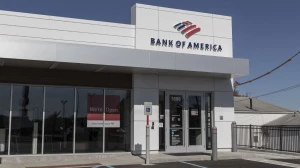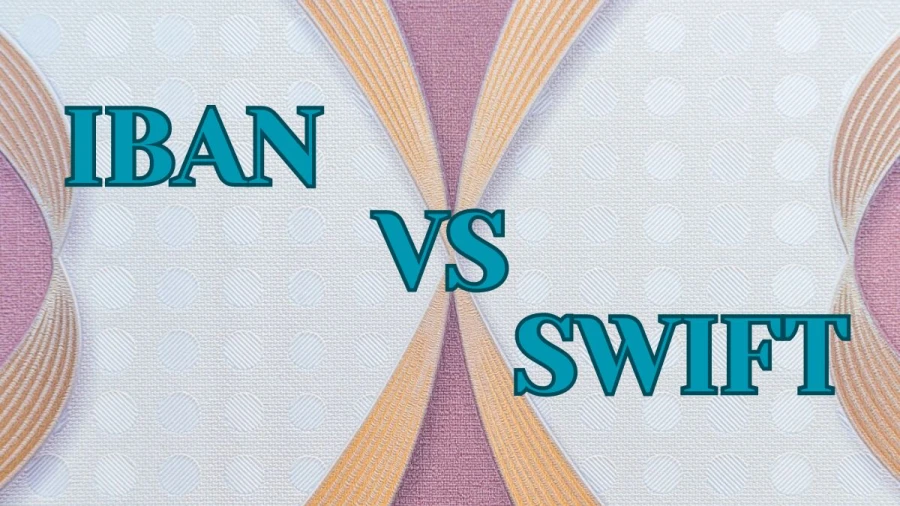
IBAN Vs SWIFT Code, Is IBAN Same as SWIFT?
IBAN is an international account identifier ensuring precise routing of funds, while SWIFT (BIC) code uniquely identifies specific banks in global transactions; IBAN focuses on individual accounts, and SWIFT code points to specific banks within the international netfwork.
Published Aug 10, 2023 | Updated Dec 28, 2023 | 📖 6 min read
Is IBAN Same as SWIFT?
IBAN and SWIFT serve distinct roles in international finance. IBAN is an alphanumeric code uniquely identifying individual bank accounts for precise cross-border transactions.
In contrast, SWIFT codes, or BICs, have a broader scope, identifying specific financial institutions globally, guiding funds through the intricate web of international banking connections. While IBAN ensures micro-level precision, SWIFT facilitates efficient interbank communication at a macro-level, ensuring accurate and reliable cross-border fund transfers.
IBAN Vs SWIFT Code
In the international transactions, a SWIFT BIC code pinpoints a particular financial institution, while an IBAN number serves as a global counterpart to a bank account and ABA routing number in the United States, uniquely identifying an individual account along with the country of business.
|
IBAN Code |
SWIFT/BIC Code |
|
IBAN is short for International Bank Account Number. |
SWIFT is short for Society for Worldwide Interbank Financial Telecommunication) a.k.a. BIC code (Bank Identifier Number). |
|
Used to identify an individual account in cross-border payments. |
Used to identify a specific bank during an international transfer. |
|
LU 28 001 94006447500003 (Luxembourg) |
UNCRITMMXXX (UniCredit Banca in Milan, Italy) |
|
Bank transfer fees, commission, and exchange rates (3-5%). |
Bank transfer fees, commission, and exchange rates (3-5%). |
|
Used for transfers between banks and financial institutions. |
Used by banks, service providers, clearinghouses, corporate business houses, brokers, etc. |
|
Bank statement, bank website, online calculator. |
Bank statement, bank website, online calculator. |
Do You Need IBAN if You Have SWIFT Code?
In the U.S., IBANs are not used, and bank accounts use ABA routing numbers domestically and SWIFT codes internationally. While both IBAN and SWIFT may be required in certain cases for precise global fund transfers, it's essential to recognize that not all countries follow the IBAN system.
If IBANs are not applicable, relying on the SWIFT code alone is often sufficient for international transfers. Banks can guide on requirements based on the recipient's location, and proactive communication ensures accurate information and compliance, streamlining cross-border fund movements.
Where Can You Find Your IBAN or SWIFT Number?
In countries like the United States, Canada, Australia, New Zealand, and China, IBAN codes are not used; instead, SWIFT codes and routing numbers are employed for banking transactions. IBANs are predominantly associated with European nations, and the responsibility for generating IBANs lies with the respective bank or branch, following the guidelines of the European Commerce Banking Services (ECBS).
The structure of the Basic Bank Account Number (BBAN) varies across countries, lacking uniformity in formats, and while some countries may register BBAN formats with SWIFT, it's not obligatory. Notably, SWIFT does not specify a BBAN length requirement, distinguishing it from IBAN numbers.
What Are the Examples of a SWIFT/IBAN Code?
In global banking, SWIFT codes and IBANs are essential for ensuring smooth and precise money transfers. A SWIFT code identifies a specific bank, while an IBAN acts like a unique fingerprint for individual accounts during international transactions. To make it clearer, let's look at examples of both a SWIFT code and an IBAN, breaking down their structures and importance.
SWIFT Code
A sample code representative of messages within the SWIFT system is as follows:
Code: BOFAUS3NXXX
In this instance, the identifier "BOFA" designates the recipient bank's name, which is Bank of America N.A. The country code "US" signifies the United States, while "3N" serves as the location code for New York City. Optionally, the suffix "XXX" denotes the bank's main headquarters.
IBAN Code
Here's an illustrative example of an arbitrary IBAN assigned to an account situated in Turkey:
IBAN: TR330006100519786457841326
In this case, the prefix "TR" signifies Turkey as the location of the account, with the checksum 33 verifying the accuracy of the subsequent IBAN input. The recipient bank is indicated by 00061, while the receiver's account number is 0519786457841326.
What Are the Pros and Cons of IBAN?
IBAN offers numerous benefits, including global standardization, accuracy, and efficient routing of funds. However, its limited adoption in certain regions, varied formats, and potential complexities should be considered when evaluating its advantages and disadvantages for international transactions.
Pros of IBAN
- The structure of IBANs includes a checksum digit, which helps verify the accuracy of the account number, minimizing the risk of errors during fund transfers.
- The IBAN structure includes country-specific and bank-specific codes, making it easier to identify both the recipient's country and the bank involved in the transaction.
- By streamlining the transfer process and minimizing errors, IBANs can contribute to cost savings for both banks and customers involved in international transactions.
Cons of IBAN
- BAN adoption is more prevalent in European and European Union countries. This can pose challenges for individuals and businesses operating in regions where IBAN is not widely used.
- The alphanumeric nature of IBANs may be unfamiliar to some individuals, potentially leading to confusion or errors during manual entry.
- Depending on the bank and region, there may be fees associated with generating and using IBANs, especially in cases where intermediary banks are involved in the transfer.
What Are the Pros and Cons of SWIFT?
SWIFT offers a well-established and secure communication network for international financial transactions, with precise bank identification and connectivity advantages. However, the system's costs, potential delays, intermediary bank management, and manual entry challenges should be weighed against its benefits when evaluating its suitability for cross-border fund transfers.
Pros of SWIFT
- SWIFT provides a robust and widely adopted communication platform that connects financial institutions around the world, facilitating secure and efficient communication for international transactions.
- The SWIFT network has been operational for decades and has established a reliable infrastructure for transmitting financial messages, contributing to the smooth functioning of cross-border transfers.
- SWIFT codes (BICs) uniquely identify specific banks, ensuring accurate routing of funds to the intended financial institution, thereby reducing errors in international money transfers.
Cons of SWIFT
- Participating in the SWIFT network involves fees for financial institutions, which can contribute to higher costs for sending and receiving international transfers.
- In some cases, the intermediary bank(s) involved in the transfer may deduct fees, which could lead to less transparency and uncertainty about the final amount received by the beneficiary.
- The reliance on alphanumeric SWIFT codes for bank identification leaves room for manual entry errors, potentially causing delays or misdirected funds.
IBAN Vs SWIFT Code - FAQs
1. What is the main purpose of an IBAN and a SWIFT code?
The main purpose of an IBAN (International Bank Account Number) is to uniquely identify an individual bank account involved in an international transaction.
2. How are IBANs and SWIFT codes structured?
IBANs consist of up to 34 alphanumeric characters, including a country code, a check digit, and a Basic Bank Account Number (BBAN).
3. Which countries use IBAN and SWIFT codes?
IBANs are more commonly used in European and European Union countries. SWIFT codes, on the other hand, are widely used globally, including in countries like the United States, Canada, Australia, and New Zealand.
4. How do IBANs and SWIFT codes contribute to the accuracy of international transfers?
IBANs enhance accuracy by providing a standardized format for identifying individual bank accounts, and they include a checksum digit to detect errors.
5. Are IBANs and SWIFT codes required for all international transactions?
The requirement for IBANs and SWIFT codes varies based on the sending and receiving countries.




